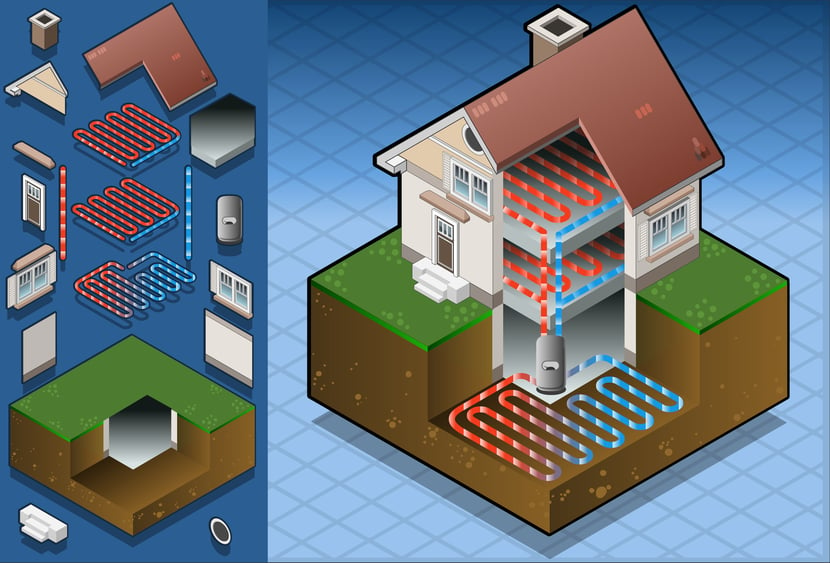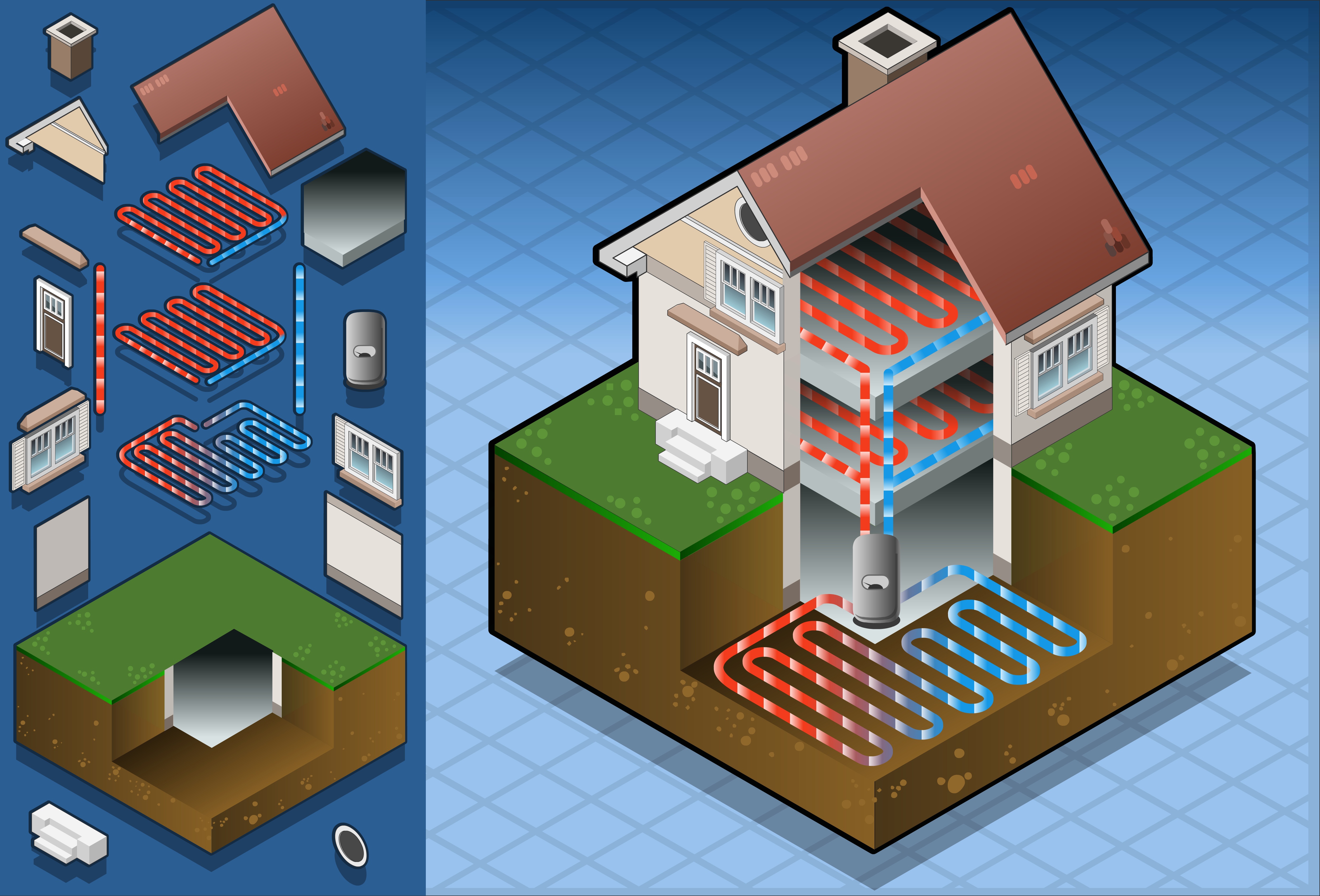For sceptical critics who believe that heat pumps are only effective in warm climates, geothermal devices are a cold dose of reality. In this regard, geothermal heat pump options refer to those devices where heating and cooling needs are met by exchanging heat between buildings and the ground underneath. Given the way the system is designed, these devices are perfect for properties located in colder climates.

For individuals looking to meet their heating, cooling, and hot water requirements in an energy-efficient manner, we’ve got good news. Our blog this week dives into all you need to know about geothermal heat pumps. Keep reading to find out more!
How do geothermal heat pumps work?
Geothermal heat pumps are capable of moving heat from one space to the other. In this context, this means shuttling thermal energy between a given property and the ground below.
In the summer, these systems extract heat from a building and transfer it to the ground for cooling. In the winter, it takes natural heat from the ground and sends it back inside to create a warmer environment.
Geothermal devices are, therefore, a fantastic heating solution if you’re building a new property or renovating an existing building. Through its cutting-edge technology, heating and cooling activity no longer incur eye-watering electricity bills.
What are the different types of geothermal heat pumps?
Geothermal devices can be divided into two primary categories Open-Loop and Closed-Loop systems. With regard to the former, this comprises three separate types, including horizontal, vertical, and pond/lake devices.
Horizontal devices are generally the most cost-effective for residential properties, specifically for new constructions. Here, it is beneficial if sufficient land available on-site, as these devices require trenches at least four feet deep.
Vertical systems, on the other hand, are used for large-scale projects such as commercial buildings, where land is limited or the soil is too shallow to bury horizontal loops. While these systems are more expensive, they use less land and minimise any disturbance to the existing environment.
Pond/lake systems are chosen if the specific site has a water body that can fulfil the requirements of these devices. Easily considered the least expensive option, these systems use a supply line pipe that runs underground from the building to the water and coils into circles under the surface to prevent freezing.
Open-Loop systems, are entirely different from those above. Here, a well or surface body of water is used as the heat exchange fluid, which then circulates directly through the heat pump system. Once this is complete, the water returns once more to the ground. This option is suitable if there’s a supply of clean water and if all local regulations regarding groundwater discharge are met.
How energy-efficient and cost-efficient are these systems?
While the installation cost for these systems are higher than those for air source devices, returns on your investment can be experienced in terms of energy savings in 5-10 years. Further, air source devices tend to incur higher energy costs, which isn’t the same for geothermal heating options.
In addition to this, it may be likely that your system is eligible for certain rebates and incentives through local government measures. Geothermal heat systems also have an average lifespan of around 20+ years for the pump itself and 25-50 years for the underground infrastructure. Further, they move between 3-5 times the energy they consume, between a building and the ground.
When it comes to measuring efficiency of geothermal heat pumps, Energy Efficient Ratio (EER) and the Coefficient of Performance (COP) must be looked into. Cooling is determined by the former and heating through COP.
Key Takeaways
Given the features above, geothermal devices are a popular choice for heat pump enthusiasts in the present market.
Despite higher startup costs, these devices are not just energy-efficient and cost-effective but are also ideal for properties in colder climates. By being truly aware of its exceptional features through the blog post above, make the best heating and cooling decisions with geothermal heating options.
Contact Us
Have any doubt or need more resources? Fill out our contact form and a member of our dealer support team will reach out to you shortly!

